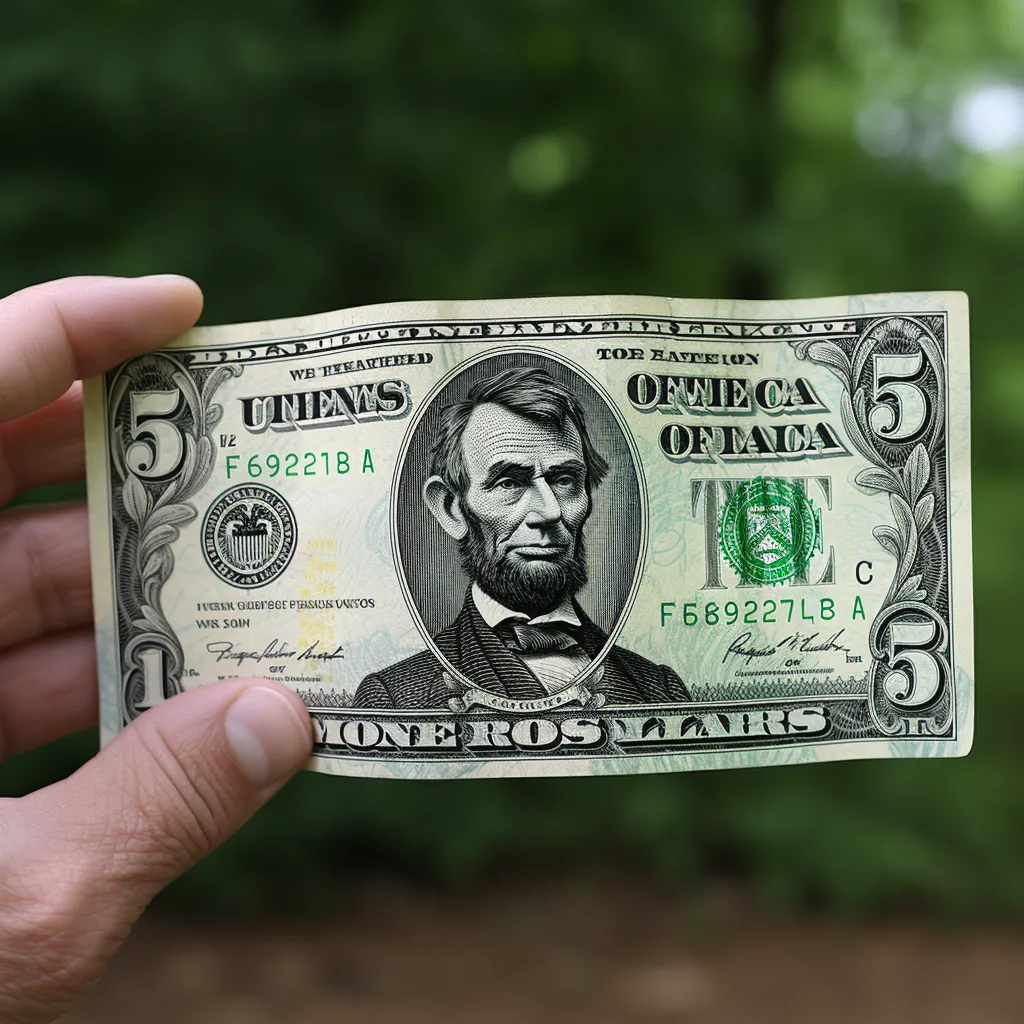Have you ever wondered where the money goes when you make a purchase on Fiverr? This popular freelance marketplace connects clients with service providers across various fields. From graphic design to writing, Fiverr offers a wealth of opportunities for both buyers and sellers. But how does the payment system work, and what happens to your money once the transaction occurs? Let’s dive into the details of Fiverr's business model to uncover the flow of money on this platform.
Understanding Fiverr's Business Model

Fiverr operates on a unique business model that benefits both freelancers (or "sellers") and clients (or "buyers"). At its core, Fiverr allows sellers to offer their services—called 'gigs'—which clients can purchase. Here’s a deeper look at the key components of Fiverr's model:
- Service Listings: Sellers create service listings that outline what they offer, set the pricing, and define the timelines for delivery. Gigs range widely from $5 to several hundred dollars based on the complexity and skill involved.
- Transaction Fees: Fiverr charges sellers a commission fee—usually around 20% of the gig price. So, if you buy a gig for $100, the seller receives $80, and Fiverr keeps the $20.
- Buyer Protection: To encourage trust, Fiverr has built-in buyer protection measures, which means funds are held in escrow until the job is completed to the client’s satisfaction. This way, sellers ensure they get paid, while buyers know their money is safe until they approve the work.
- Fiverr Pro and Premium Services: Fiverr also has a premium segment called Fiverr Pro, where vetted professionals can charge higher rates for their services. This offering attracts high-quality sellers and clients, thereby enhancing the platform's reputation.
Overall, Fiverr's model is designed to facilitate easy transactions while ensuring that both sides have a sense of security and fair play. Understanding this structure helps demystify the money flow on Fiverr and gives you insight into how to make the most of your experience, whether you’re buying or selling.
Also Read This: How to Start Working as a Freelance SAP Consultant
3. Breaking Down Seller Fees and Commissions

When you're a seller on Fiverr, understanding the fee structure is crucial for effectively managing your profits. Fiverr operates on a commission model, which means it takes a percentage of every sale you make through the platform. Typically, that’s around
- 20% of the total sale price.
So, if you sell a service for $100, you’re looking at a $20 commission. This can feel hefty at first, but consider it as a contribution towards a platform that offers access to millions of potential buyers.
Besides the commission, there are other factors to consider:
- Service tier: As you grow and accumulate more successful gigs, you might gain access to Pro services, which come with different fee structures.
- Withdrawal fees: When transferring your earnings from Fiverr to your bank account or PayPal, there may be additional fees that apply. For instance, PayPal users can incur fees based on their PayPal agreement.
Another thing to note is that Fiverr has implemented a review system for gig performances. If you have lower ratings or cancellations, you may receive fewer orders, thus affecting your overall earnings. In this competitive ecosystem, maintaining high-quality service is key for financial success!
Also Read This: What Does Gig Impression Mean on Fiverr?
4. Buyer Payments and Service Fees

Buyers on Fiverr don’t just pay the listed price for the service; they also face an additional layer of fees known as service fees. This is Fiverr's way of ensuring a quality platform and offering its various features. Generally, the service fee for buyers can be broken down like this:
- For purchases under $40, Fiverr charges a $2 fee.
- For purchases of $40 and above, the fee is 5% of the total amount.
So, if you’re buying a gig for $50, the total cost you would see at checkout equals $50 + ($50 x 0.05) = $52.50. It’s pretty straightforward, but it’s essential for buyers to be mindful of these extra costs.
Additionally, Fiverr ensures that payments are secure and the transaction is seamless. Once a buyer makes a payment, the funds are held in escrow until the order is completed. This means that:
- Buyers can be confident that they will receive their service before the seller gets paid.
- Sellers can rest assured that the funds are secure and will be released upon satisfactory completion of the order.
Understanding these fees helps both buyers and sellers navigate the platform more effectively. By being informed, everyone can better manage their expectations and budget accordingly.
Also Read This: How to Set Up Your Fiverr Account
Fiverr's Revenue Streams
Fiverr has carved out a unique niche in the freelancing world by not only providing a platform for sellers to showcase their talents but also generating revenue through various streams. Understanding where Fiverr makes its money can give both buyers and sellers better insight into how the platform operates.
So, where does the money go in Fiverr? Let’s break it down:
- Service Fees: Fiverr charges a service fee on every transaction. For sellers, this is typically a 20% cut taken from their earnings. For buyers, there’s also a processing fee that usually varies based on the order amount.
- Subscription Plans: Fiverr offers various subscription plans, like Fiverr Pro, where sellers pay a fee to be featured as a premium seller. Buyers can also unlock services or features through subscription options.
- Ads and Promotions: The platform generates income through advertising. Companies can promote their gigs within Fiverr or through third-party ad networks, enhancing visibility for their services.
- Affiliate Programs: Fiverr has an affiliate marketing program where it pays out commissions when someone signs up or makes a purchase via a referral link.
These revenue streams ensure that Fiverr remains profitable while providing a platform that connects freelancers with clients globally. The diverse income approach not only supports operational costs but also allows Fiverr to invest back into the platform, enhancing user experience and expanding services.
Also Read This: How to Cancel an Order on Fiverr
Impact on Sellers: Earnings and Withdrawals
For sellers on Fiverr, understanding the financial mechanics is crucial, especially when it comes to earnings and the process of withdrawals. How much will you actually take home, and how does the withdrawal process work? Let’s dive in.
First off, after delivering a service, sellers receive their earnings minus the 20% service fee. So, if you charge $100 for a gig, you’ll take home $80. Simple math, right? But here’s what’s important to note about withdrawals:
- Withdrawal Options: Fiverr offers various methods for sellers to withdraw their funds, including direct bank transfers, PayPal, and Fiverr Revenue Card. Each option has its own processing time and fees.
- Clearance Time: Once a job is completed, the seller has to wait a clearance period of 14 days before they can withdraw their earnings. This is to accommodate any potential disputes or refunds.
- Minimum Withdrawal Amount: Depending on the withdrawal method, there may be minimum amount thresholds to withdraw. For instance, PayPal might have a minimum of $5.
Overall, while Fiverr provides an accessible platform for wide-reaching exposure, understanding the financial ecosystem can help sellers maximize their earnings and streamline their withdrawal processes. By being savvy about fees and withdrawal options, sellers can better navigate their Fiverr journey and enhance their profitability.
Also Read This: Can You Modify a Gig on Fiverr?
How Fiverr Invests in Its Platform
Fiverr isn’t just a marketplace for freelancers and clients; it’s also a platform that continually evolves and invests in its infrastructure to ensure a better experience for all users. So, where does that investment go? Let’s break it down!
1. Technology Upgrades
One of Fiverr’s biggest expenditures is on technology. This includes improving their website and mobile applications to make them faster and more user-friendly. After all, who wants to deal with a laggy site when you’re trying to find the perfect freelancer or the best gig?
2. Security Enhancements
Given the financial transactions that occur, Fiverr heavily invests in cybersecurity measures. This includes everything from encryption to fraud detection systems. By ensuring that transactions are secure, Fiverr gains trust from users and builds a loyal community.
3. Marketing and Outreach
Another significant chunk of Fiverr’s investment goes into marketing. They utilize various channels, such as social media, content marketing, and traditional advertising, to attract both freelancers and clients. This not only helps grow their user base but also bolsters brand awareness.
4. Customer Support Improvements
Fiverr understands that a great user experience extends beyond just finding and hiring freelancers. So, they invest in customer support teams and resources to ensure that inquiries and issues are resolved promptly, creating a more seamless experience for everyone.
5. Educational Resources
Lastly, Fiverr is committed to providing extensive resources for both buyers and sellers. This includes creating tutorials, webinars, and guides that help users maximize their experience on the platform. An educated user is often a satisfied user!
Conclusion
In a nutshell, understanding where the money goes in Fiverr reveals a thriving ecosystem focused on enhancing the user experience. By investing in technology, security, customer support, and educational resources, Fiverr positions itself not just as a platform, but as a community aimed at empowering freelancers and clients alike.
Moreover, the platform's efforts in marketing and outreach illustrate a commitment to growth and sustainability, ensuring that Fiverr remains a relevant and competitive player in the gig economy.
So, next time you utilize Fiverr, remember that your money is not just helping freelancers but also fueling innovations that enhance your overall experience. It’s a win-win situation for everyone involved!



